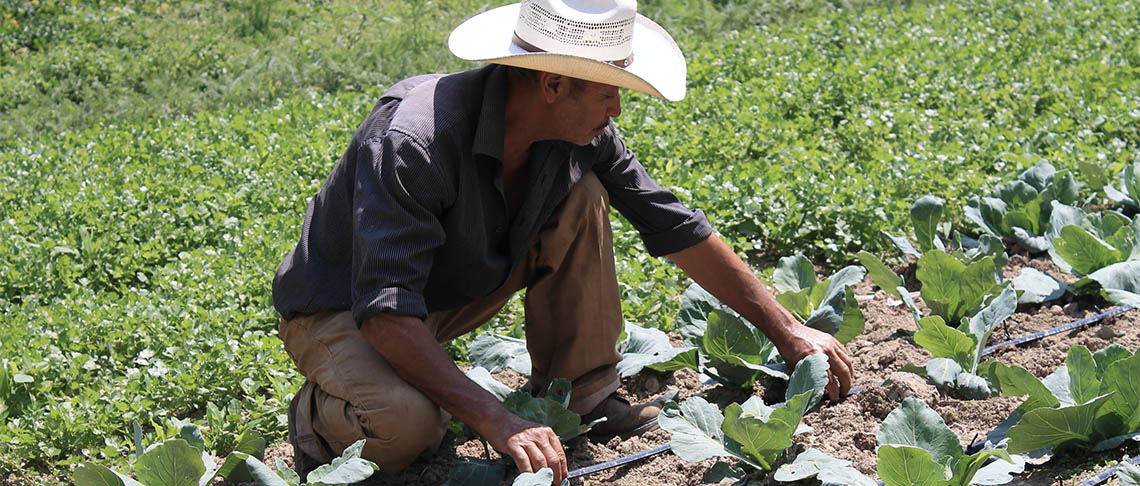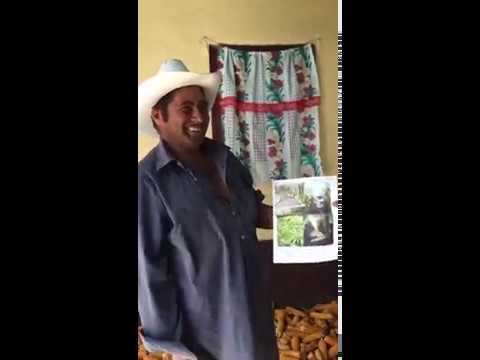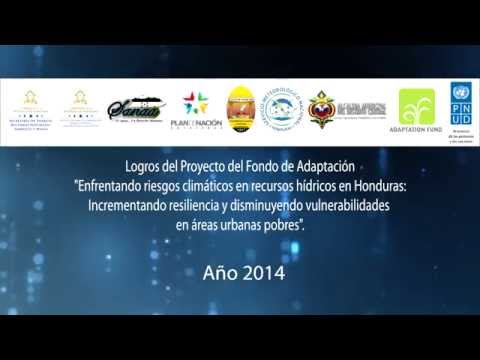
Photo:
Access to water is still limited in many areas of Honduras. Degraded watersheds affected by deforestation and pollution of both surface and ground water aggravate this critical situation. Urban areas (Tegucigalpa and San Pedro Sula) and several agricultural areas (Patuca basin) will face increased water scarcity in the near future.
Honduras is currently considered one of the most vulnerable countries in Latin America, and climate scenarios indicate that existing water scarcity will be exacerbated by climate change and increasing variability. A growing population leads to ever-greater encroachment in areas prone to landslides and flooding. The perception of disaster risk associated with climate variability and change is high among Tegucigalpa’s population, but the association between disasters and climate change is still incipient.
This project (2011 - 2016) increased resilience to climate change water-related risks in the most vulnerable populations in Honduras through pilot activities and an overarching intervention to mainstream climate change considerations into the water sector.
- Municipality
- National
- Country Office
- National Governments
Vulnerable Populations; Urban Poor
- Secretariat of Environment and Natural Resources (SERNA), Honduras
- United Nations Development Programme (UNDP)
- Adaptation Fund
Honduras is currently considered one of the most vulnerable countries in Latin America. The Germanwatch Institute (2010) ranked Honduras number three on the list of countries with highest levels of exposure and vulnerability to extreme events for 2008, confirming the urgent need to mainstream climate change into policies and programs. A recent evaluation from the World Bank concluded that 62 percent of the territory Honduras and 92 percent of the total population were at risk from two or more hazards, placing Honduras in the world’s top ten ranked countries at risk of natural disasters.
There is recognition of the need to increase water availability during the dry season and to reduce the risk of flooding. The Government is therefore endeavoring to address climate risks to water resources through a multi-pronged approach that includes improved governance at both national and local levels, strengthened capacities to generate science-based information, as well as development of vital sustainable infrastructure to reduce vulnerabilities to water scarcity and flooding. However, a series of barriers impede the effectiveness of the Government’s efforts. These include difficulties in downscaling climate change models; an absence of technical and human capacities to generate and monitor hydrologic and climatic data; weak communication flow between scientists and policy-makers as well as between institutions and different economic sectors; insufficient local and national capacities to mainstream climate risk considerations into development planning and programming processes, as well as an overall low awareness of climate change impacts and adaptation options for climate-resilient water resources management.
In the capital city of Tegucigalpa, heavy rainfall and the associated landslides and floods affect the economy and threaten lives. Due to the high cost of the land, the poorest people live in the most vulnerable areas, especially those prone to landslides. As a result of increasing rainfall, some of these landslides have become more frequent in recent years, affecting poor families’ houses. After Hurricane Mitch in 1998, the municipality of Tegucigalpa tried to relocate some of the most vulnerable residents to new small villages far from the city. In most cases, however, residents returned to their homes in vulnerable areas, as their only livelihood options and possible sources of income were in Tegucigalpa. There is therefore a need to develop response measures that reduce vulnerability levels of these highly exposed communities.
Efforts undertaken by the national Government with the technical support of UNDP have attempted to identify the country’s most vulnerable areas to climate change. Many workshops with key actors have taken place. Choluteca Basin, as part of Tegucigalpa’s upper water supply, was placed at the top of this list. This project therefore sought to increase resilience to water-related risks in the most vulnerable populations in Honduras through pilot activities and an overarching intervention to mainstream climate change considerations into the water sector. Due to the cross-cutting scope of this sector, the project contributed to incorporating climate change issues into the planning processes and investment decisions of key line ministries. Targeted work in Tegucigalpa and the watersheds that provision the capital city validated concrete response measures – ranging from economic incentives to low-cost technology investments that assist in orienting work at policy levels.
Component 1: Relevant institutional structures strengthened for mainstreaming climate change risks into water resources management and planning
Integrate climate change risks in new Water Law, National Plan Law, and relevant policies and plan (Output 1.1), while increasing capacities of new Water Authority and SEPLAN to achieve these outcomes (Output 1.2). Strengthen national meteorological network and information on climate change impacts (Output 1.3), making this information available to relevant institutions and planning processes for climate-proofing watershed management approaches, agricultural practices, flood and landslide control measures, and infrastructure development (Output 1.4).
Component 2: Comprehensive measures piloted to safeguard Tegucigalpa City and environs’ water supplies
Maintain water provisioning services despite long-term climate trends through sustainable land use practice pilots (Output 2.1), and use financial mechanisms to assist in managing water supply and demand (Output 2.2). Pilot activities for impacts from water scarcity to flooding in 14 most vulnerable areas of Tegucigalpa (Output 2.3), and craft targeted thematic strategic plans to enable municipal authorities of the upper Choluteca River to overcome short-term reactive responses to climatic risks and impacts (Output 2.4).
Component 3: Targeted capacity building and outreach enable stakeholders at all levels to effectively respond to long-term climate change impacts
Train decision makers and resource users to understand the projected impacts of climate change and identify effective options for reducing climatic risks and vulnerability (Output 3.1), including through “policy dialogue platforms” for prioritization of adaptation options (Output 3.2) and a communications and outreach strategy (Output 3.3).
Project monitoring and evaluation for the project were carried in accordance with established UNDP procedures, carried out by the Project team and the UNDP Country Office. Periodic monitoring of implementation progress was undertaken by the UNDP-CO through quarterly meetings with the project proponent, or more frequently as deemed necessary. This allowed parties to take stock and to troubleshoot any problems pertaining to the project in a timely fashion to ensure smooth implementation of project activities.
Viet the project's Mid Term Evaluation (2014) here.
- PNUDSonia SuazoCoordinadora Nacional de Proyecto
- UNDPMontserrat XilotlRegional Technical Advisor
- UNDP HondurasNoelia JoverClimate Change Officer
- UNDP HondurasJuan FerrandoProgramme Officer




